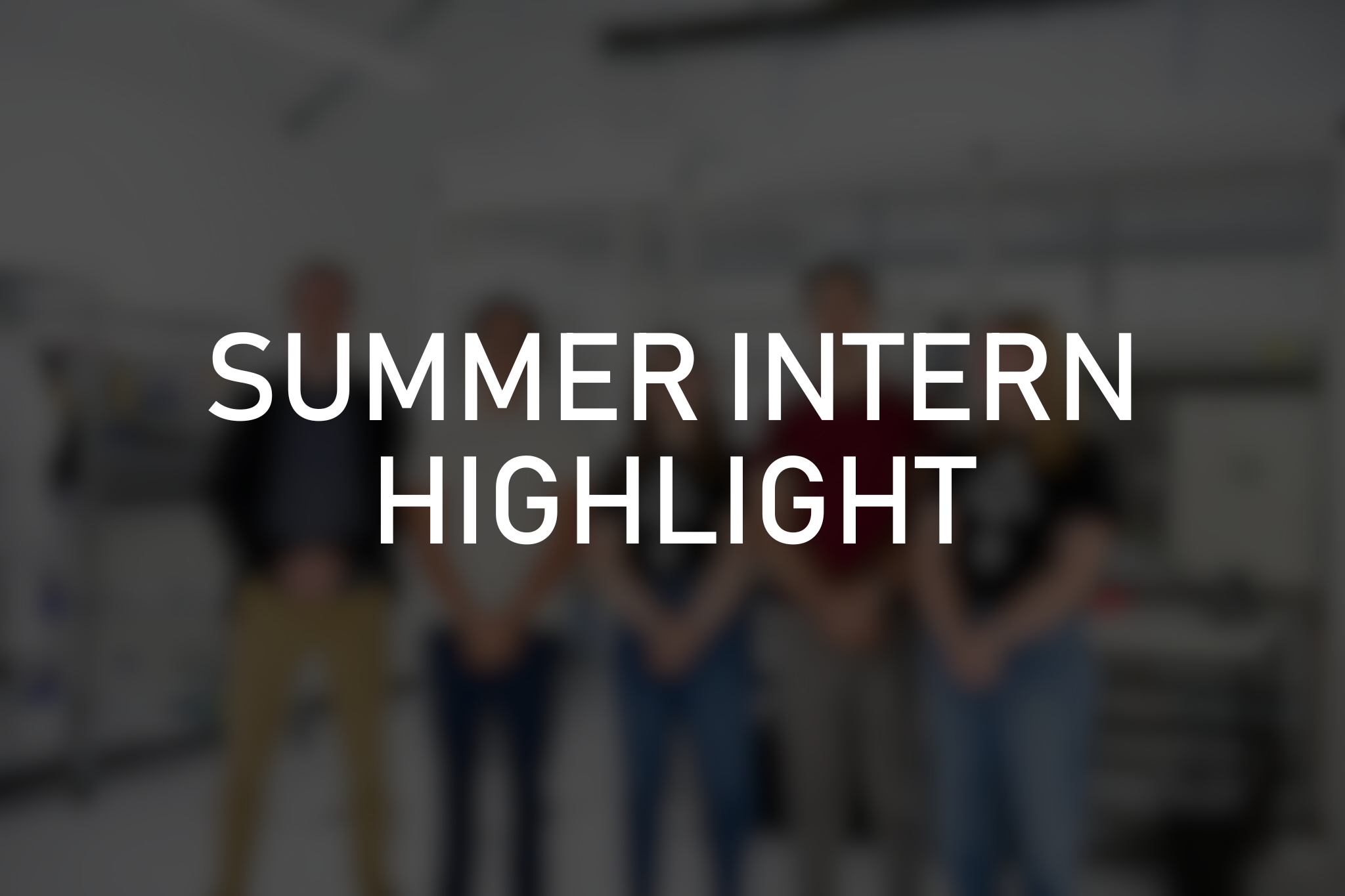Summer Interns: Stories and Successes
At Agile Space Industries, we love our interns and are proud to offer several internship programs for students. Supporting the next generation of engineers and sharing knowledge is very important to us. We approach our internships with a very hands-on style, integrating our interns as contributing members of our program teams. At Agile Space, interns get to see the engines they work on hot fire or the processes they help refine implemented. We want our interns to leave with skills they can apply in their next job as an engineer.
With every season of interns we onboard, we are blown away by their skill sets and how advanced they already are. As the summer internships come to an end, we asked our interns a few questions about their experience at Agile Space to highlight what they worked on and what they learned.
SOPHIE STRAWBRIDGE
MANUFACTURING ENGINEERING INTERN
Short description on what you did and what programs they worked on:
As a member of the manufacturing team I have ensured chambers and injectors for the A110-LP thruster are being machined accurately and efficiently. This includes:
Writing assembly procedures for a hot-fired A110-LP thruster
Writing and performing quality inspection procedures for machined hardware to verify accuracy and repeatability of a machine process
Re-designing injector geometry to be compatible with metal additive manufacturing techniques as a Responsible Engineer
Designing and testing universal water flow fixtures to decrease setup time between injectors
Selecting and sourcing milling tools to machine precision features such as o-rings glands on injector faces
What was one of your best experiences from your internship?
One of the best experiences of my internship was sitting in the control room at the test site while they hot fired our team’s thruster. It was a surreal feeling to finally push the limits of the hardware we had just spent the last month designing, inspecting, testing and assembling.
What was a challenge you encountered during your internship and how did you work through it?
The injector I am responsible for worked great in a theoretical environment. However, the unique geometry that maximized the fluid behavior, did not work for the additive manufacturing process. Certain sections of the fluid channels appeared fine in CAD but were too thin and detached from the rest of the injector body during print. By working with the Additive Team, we were able to identify minimum design guidelines to ensure a structurally sound print while still maintaining good fluid behavior. This challenge not only informed me about the metal additive manufacturing process but also informed my future designs using a similar manufacturing technique.
What do you feel like you learned from this internship that gave you skills to help you advance your career?
Agile gave me the opportunity to own real, critical projects as both a Responsible Engineer and a Lead Manufacturing Engineer. Gaining experience in making both design and manufacturing decisions while under a deadline will be invaluable in advancing my career. I also gained experience in a variety of design and manufacturing roles. The lessons learned from each position served to inform all my other responsibilities going forward.
How were you supported in growing as an engineer?
My team was extremely supportive in helping me explore any projects or experiences I wanted, even if they fell outside the initial scope of my responsibilities. Despite being hired as a manufacturing engineering intern, I expressed interest in taking on propulsion design projects as well. My team enthusiastically gave me the resources and support to be a Responsible Engineer for an injector on the project in addition to my manufacturing responsibilities.
ENZO NELLIGAN
PROPULSION ENGINEERING INTERN
Short description on what you did and what programs they worked on:
I’ve been able to work on multiple projects here at Agile, primarily working with the M4 team supporting design and development of the thruster and supporting components. Supporting the team as a responsible engineer allowed me to own components and assemblies from start to finish though every step of the project, whether it be testing hardware, or designing complex thermal structures for the finished product. The M4 thruster is a monoprop RCS thruster, which is like nothing I’ve ever seen before.
What was one of your best experiences from your internship?
There’s been numerous times throughout my internship where I’ve been able to design, manufacture, and test my hardware from the ground up. Working with additive manufacturing forces you to work with a new set of requirements and opens the door to lots of new structures and geometries. I’ve worked on generating the M4 injector, thermal standoff, and fitting, all of which are morphed into one model. The detail and complexity are much greater when you realize it’s only an inch tall versus the magnified model I’ve worked on in CAD. Having hardware in hand after working on it in CAD for weeks is easily the most rewarding part of any engineering project, and that feeling is so much better when you know the hardware you worked on will be flying to space!
What was a challenge you encountered during your internship and how did you work through it?
A challenging part of my internship has been pivoting my knowledge of propulsion from solids and conventional biprop liquids, to working on a monoprop thruster with less than 2 lbs. of thrust. The scale and complexity is like nothing I’ve worked on before, and allowed me to step into a new area of propulsion that you typically aren’t able to experience in college. Thanks to the great network of mentors and engineers at Agile, I was able to get the knowledge and resources I needed to do my own research and level up my propulsion skillset to include monoprops and hypergols enough to support the program and further development. I’m excited to bring this knowledge back to my school and club and add my knowledge to our propulsion workshops.
What do you feel like you learned from this internship that gave you skills to help you advance your career?
Agile has been a nonstop learning experience for me, and one of the best early career experiences I could ask for. Being a responsible engineer for a component gets you involved with design, development, test, manufacturing, procurement, and every step in between. Learning that full process really advanced my skills as an engineer and team member. Also, working in such an accelerated environment may be overwhelming at times, but never ceases to keep me moving and finding unique solutions to problems.
How were you supported in growing as an engineer?
Everyone at Agile is extremely supportive and almost always willing to give advice on a problem or project you’re working on. Having the network of people that are excited and willing to help me along with new ideas and different perspectives has been extremely helpful in projects and in my career.
ALTHEA NOONAN
PROPULSION DESIGN ENGINEER INTERN
Short description on what they did and what programs they worked on:
My primary role this summer has been working with the M4 team on both our DVT1 and DVT2 design/test campaigns. My most impactful work this summer was on re-designing the inlet tube geometry for the newest iteration of our injector and creating/running a thermal analysis model on the component I worked on that later expanded to the whole M4 system. I have gotten the opportunity to design waterflow hardware, run waterflow tests, and work on injector fluid calculations. Outside of M4 specifically, I have been working to design an experiment that will help multiple programs better understand material properties that are integral to our products.
What was one of your best experiences from your internship?
One of the best experiences from my internship is getting to see the design that I had been working on/analyzing for weeks as a 3D printed part! It was wonderful seeing the design outside of the CAD model for the first time.
What was a challenge you encountered during your internship and how did you work through it?
One of the biggest challenges I encountered this summer was working through repeated iterations that accompanied redesigning the M4 injector inlet tube. I had jumped into my analysis a little too early without fully understanding the first principles behind the issue. When it became clear that my solutions were not working, I went back to some hand calculations that helped me to better conceptualize and solve my design problem!
What do you feel like you learned from this internship that gave you skills to help you advance your career?
This internship has helped me to greatly expand my technical knowledge on fluids, heat transfer, and design. However, behind technical skills, I have learned how to step back when I find a problem and break down the issue into fundamental components. This has helped me to solve problems faster and given me more confidence that I can tackle any challenges I face throughout my career.
How were you supported in growing as an engineer?
The best way the team supported me this summer was by giving me the space to ask as many questions as I could in order to help grow my understanding of our systems and ultimately my own skills as an engineer!
DAVID SPADACCIA
ADDITIVE MANUFACTURING INTERN
Short description on what they did and what programs they worked on:
I primarily worked on a A110 variation thruster program, but also supported the M4 thruster program and the A2200 engine program.
As the responsible AM engineer for these programs’ builds, I owned the entire additive development process for designs we considered for hot fire testing. This process included DfAM feedback to the propulsion engineers, build file development in 3DXpert, print parameter design of experiments (DoE), QA through part inspection, and next-build design iteration.
What was one of your best experiences from your internship?
At work, seeing the A110 thruster team’s hard work culminate in hot fire testing was truly a dream come true. I’m really thankful to have been supported by many talented and personable propulsion, manufacturing, quality, and mechanical engineers throughout my time on this team.
Outside of work, camping in all ends of Colorado and Utah was nothing short of an adventure. Experiencing the beauty of the mountains, seeing the Milky Way at night, and visiting surrounding towns was something I’ll never forget. Southwest Colorado is truly a magical area.
What was a challenge you encountered during your internship and how did you work through it?
Tackling the paperwork and downstream manufacturing workflow upon starting a build could be quite daunting at times. Creating inventory, managing inventory and resolving issue tickets can get complicated very quickly, but I was thankful to have mentor support each step of the way.
What do you feel like you learned from this internship that gave you skills to help you advance your career?
The most valuable experience I gained this summer was applying the design process of thruster components while simultaneously considering fluid flow, AM, and inspection perspectives. Design of these workflows in concert is key to repeatable and robustly create parts for propulsion applications.
How were you supported in growing as an engineer?
In every facet of engineering work here, I had a host of senior mentors across many teams I could lean on when needed. Specifically in my AM work, I’m especially thankful for my supervisors Dustin Crouse and Ben Graybill for giving me practical knowledge in understanding and leveraging both metal PBF process dynamics and print parameter DoE setup for rapid development crucial to our programs’ success.
TROY EBERT
SOFTWARE ENGINEER INTERN
Short description on what they did and what programs they worked on:
I worked on software improvements for Agile’s Waterflow Test Stand. This included designing a whole system to streamline and improve the current system.
What was one of your best experiences from your internship?
The whole thing. If I’m forced to pick one aspect it would be given tons of freedom and ownership over my work. This allowed me to work closely with the engineers at Agile to deliver a product that is up to everyone’s standards and that I’m proud of.
What was a challenge you encountered during your internship and how did you work through it?
I’ve never worked solo on a system so large before. I was given a lot of freedom on how to approach building it and it forced me to get out of my comfort zone with the decisions I had to make about the system.
What do you feel like you learned from this internship that gave you skills to help you advance your career?
Working on this whole project and working with this team. I know I sound like a broken record but learning by working has helped me immensely in applying what I’ve learned to a real-world application. It also has improved my team working skills and I’m very grateful that the whole team is open to listening to what I have to say, even though I’m an intern.
How were you supported in growing as an engineer?
The whole software team has been wonderful in supporting me where I needed it. This could be guidance on how to approach a problem or allowing me to voice my thoughts.
CHARLIE KEMPF
TEST ENGINEERING INTERN
Short description on what they did and what programs they worked on:
Working at a startup has allowed me to explore many different aspects of test engineering which would have likely been pigeonholed had I been at a larger corporation. I’ve done everything from coding to working in SCBA gear. Currently I am working on a 3d printed vacuum pump with no moving parts, designed to handle corrosive propellants without requiring maintenance. On the side I am fully automating the data acquisition code for our high speed and thermal cameras, in order to massively reduce the time it takes between testing and getting data back to our design team.
What was one of your best experiences from your internship?
At my school we build and test liquid rocket engines fairly often, but our equipment is nothing compared to what we have at Sunshine and Animas. Being able to see the real thing up close, and then actually being able to get into SCBA gear and contribute to that hardware, has been a very gratifying experience for me.
What was a challenge you encountered during your internship and how did you work through it?
A big challenge for me was finding times where we could manufacture the parts I was designing. In college when you want to machine something you just go and do it, but at Agile we are pumping out injectors, nozzles and catalyst beds almost nonstop. Finding a good time to slot my designs into the work schedule has been a new challenge that I’ve had to work through. I think the solution (which is often the solution with many engineering problems) is to increase that dialogue between engineers and machinists, and that is something that is hard to learn in the classroom.
What do you feel like you learned from this internship that gave you skills to help you advance your career?
In school, we learn a lot about the analytical side of engineering, how to design a structure that doesn’t fail, but that is just one side of a very complicated job. I think a lot of early career engineers are very good at designing things that work well in CAD and FEA, but they sometimes run into issues with manufacturing or testing. Being at Agile, where an entire design cycle can take place in a matter of months, has allowed me to see how see how small changes in a design can massively affect how quickly it can move through each stage of development. That real world experience is something I think will massively benefit from.
How were you supported in growing as an engineer?
The atmosphere at Agile is electric, it feels so gratifying working with other professionals who share the same passion for space exploration that I’ve developed throughout my education. I’ve met more people here who want to go to mars than any other organization I’ve ever been a part of.
Aside from working on rocket engines during the week many of the interns lived it up in the classic outdoors of Colorado.
Photo is from when they summited Engineer Mountain with some of the Agile Space team.
Photo credit: Evan Daniel.









